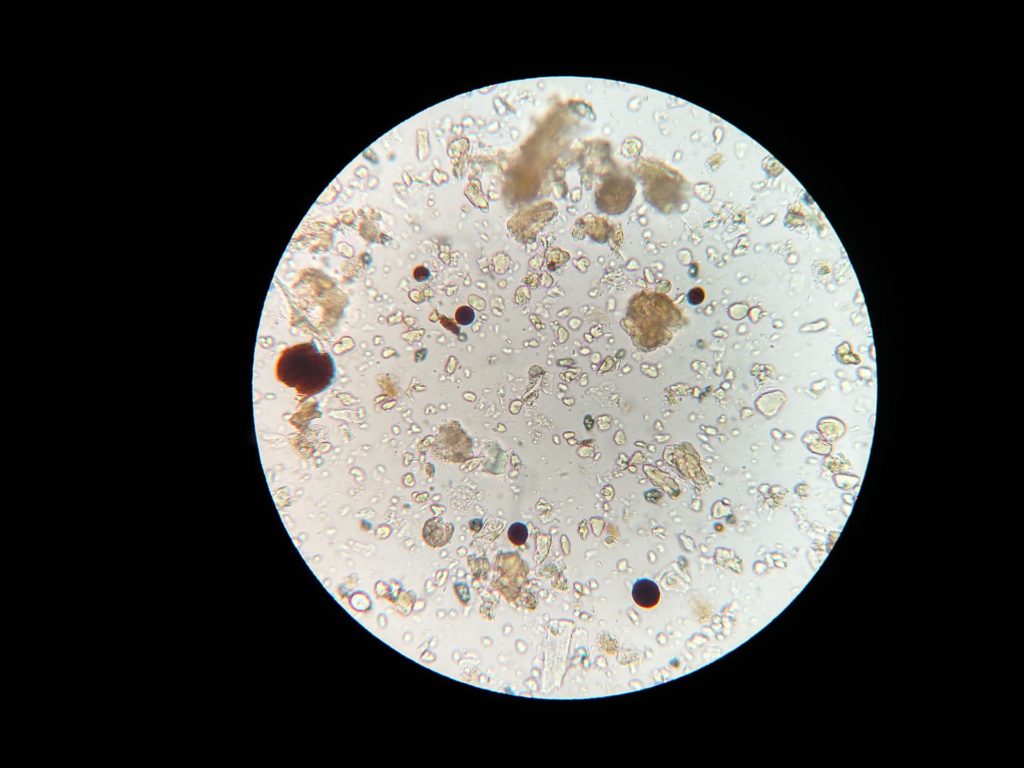
In this video, Dr. Saakshi Khattri, a rheumatologist, discusses how rheumatoid arthritis can affect various parts of the body and outlines the most important actions patients can take to avoid complications.

Research suggests that alterations in the gut microbiome before the onset of rheumatoid arthritis may present an opportunity for preventive treatments.
According to a longitudinal study conducted by researchers in Leeds, bacteria linked to inflammation are found in the gut in higher amounts about ten months before patients develop clinical rheumatoid arthritis.
Rheumatoid arthritis, which affects over half a million people in the UK, is a chronic disease that causes swelling, pain, and stiffness in the joints. The immune system mistakenly attacks the body’s healthy cells, causing the disease.
Previous research has connected rheumatoid arthritis to the gut microbiome, the community of microbes in the intestines. However, this recent study, published in the Annals of the Rheumatic Diseases, reveals a potential intervention point.
Lead researcher Dr. Christopher Rooney stated: “Patients at risk for rheumatoid arthritis often experience symptoms like fatigue and joint pain. They may also have a family member who has developed the disease. Since there is currently no cure, at-risk patients frequently feel a sense of hopelessness and may even avoid getting tested.”
“This new research might allow us to act sooner to prevent rheumatoid arthritis.”
Versus Arthritis funded the longitudinal study involving 19 patients at risk of rheumatoid arthritis. Samples were taken five times over 15 months.
Five of these patients progressed to clinical arthritis, and the research showed they had gut instability with higher amounts of bacteria, including Prevotella, which is associated with rheumatoid arthritis, about ten months before progression. The remaining 14, whose disease didn’t progress, had largely stable bacteria in their gut.
Potential treatments that the researchers want to test during the ten-month window include changes to diet, such as eating more fibre, taking prebiotics or probiotics, and improving dental hygiene to keep harmful bacteria from periodontal disease away from the gut.
The exact relationship between gut inflammation and rheumatoid arthritis development remains unclear. In a small number of patients within the study, the gut changes occurred before a rheumatologist observed any joint changes. Still, more research is needed to determine whether these influence each other.
Although bacteria is associated with rheumatoid arthritis, the researchers want to emphasize that there is no evidence that it is contagious.
Lucy Donaldson, director for research and health intelligence at Versus Arthritis, said: “At Versus Arthritis, we welcome the findings of this study, which could give the clinicians of the future a crucial window of opportunity to delay – or even prevent – the onset of rheumatoid arthritis. This success is a testament to UK researchers’ dedication to personalising treatment and preventing chronic conditions that significantly impact a person’s ability to work, raise families and live independently.”
The study initially collected data from 124 individuals with high levels of CCP+, an antibody that attacks healthy cells in the blood and indicates a risk of developing rheumatoid arthritis. The researchers compared their samples to 22 healthy individuals and seven people with a new rheumatoid arthritis diagnosis.
The findings from this larger group showed that the gut microbiome was less diverse in the at-risk group compared to the healthy control group.
The longitudinal study, which took samples from 19 patients over 15 months, revealed the changes in bacteria at ten months before progression to rheumatoid arthritis.
Of the many genes involved in rheumatoid arthritis and osteoporosis, the researchers identified two essential genes, ATXN2L and MMP14, most strongly linked to both diseases—credit Lo et al.
Rheumatoid arthritis is a prevalent condition that affects approximately 17 million people globally. This disease occurs when the immune system mistakenly attacks the joints, leading to pain, swelling, and damage to the cartilage and bones. Additionally, individuals with rheumatoid arthritis are at an increased risk of developing osteoporosis, a more serious condition that can arise from the bone damage caused by the immune response as well as from certain medications used to treat the disease.
In the journal APL Bioengineering from AIP Publishing, researchers from Da-Chien General Hospital, China Medical University, and Chang Gung University used analytical tools and machine learning algorithms to identify two genes associated with rheumatoid arthritis and osteoporosis. These genes could serve as diagnostic tools and potential targets for treatment.
Both diseases revolve around a key mechanism that helps regulate the body’s functions. Apoptosis, or programmed cell death, is an essential process that immune cells use to eliminate malfunctioning or unnecessary cells. However, malfunctions in this process can cause immune cells to mistakenly target random cells, often resulting in severe consequences.
“Excessive apoptosis of bone-forming cells in rheumatoid arthritis leads to joint destruction and inflammation,” stated author Hao-Ju Lo. “This same process also results in weakened bones in osteoporosis, highlighting the necessity of managing both conditions concurrently.”
Because of its central role, the researchers set out to find genes involved with apoptosis that were closely linked to both diseases. Drawing from an extensive database of genetic information, they gathered dozens of sequenced genomes from people with rheumatoid arthritis and osteoporosis to look for similarities. Combing through this mountain of genetic data was no easy task, so they turned to recently developed computational methods to narrow their search.
“We used bioinformatics tools to analyze large gene datasets, focusing on genes active in rheumatoid arthritis and osteoporosis,” said Lo. “We applied machine learning techniques, such as Lasso and Random Forest, to refine our search, identifying two key genes — ATXN2L and MMP14 — that play significant roles in both diseases.”
According to their analysis, these two genes are significantly associated with the progression of rheumatoid arthritis and osteoporosis. ATXN2L regulates processes like apoptosis, so malfunctions in this gene are likely to trigger both rheumatoid arthritis and osteoporosis. MMP14 contributes to building extracellular tissue like cartilage and could be responsible for the breakdown of joint tissue that leads to rheumatoid arthritis.
“Our analysis revealed that these genes are involved in immune regulation and bone metabolism, suggesting they could be useful markers for diagnosing or treating rheumatoid arthritis and osteoporosis,” said Lo.
With two potential targets identified, the authors plan to use these results as a starting point to develop new treatment options for patients suffering from these two linked diseases.
“We plan to validate these findings with experimental studies and explore how targeting these genes could improve treatment outcomes,” said Lo. “Our future research may also involve developing personalized therapies, leveraging AI and machine learning to predict which patients are most at risk for osteoporosis.”
###

The study, published in The Journal of Rheumatology, examined dyadic coping—when a couple engages in joint problem-solving information gathering, sharing feelings, and demonstrating mutual commitment—from both partners’ perspectives. T. “Dyadic coping refers to how couples work together to manage the challenges of one partner’s illness. This process is a key predictor of how well patients adjust to their disease and overall well-being,” says Dr. Manasi Murthy Mittinty from the College of Medicine and Public Health. . The sample consisted of 163 couples.
Dyadic coping fosters a sense of unity, helping couples create strategies together to deal with stressful situations, and serves as a protective factor that reduces the likelihood of divorce.
Collaborating as a couple is essential for navigating the challenges posed by one partner’s illness, especially in cases of rheumatoid arthritis.
Rheumatoid arthritis (RA) is an autoimmune disease that can lead to irreversible tissue damage, progressive deformity, and pain. Approximately 18 million people worldwide are affected by RA, including nearly 456,000 Australians.
Although the management of rheumatoid arthritis (RA) has improved significantly due to biologic treatments, many patients still experience severe physical pain and stiffness. Additionally, around 35% of individuals with RA report mental and behavioural conditions, such as bipolar disorder, mania, and anxiety disorders.
“We found that supportive dyadic coping leads to lower depression, anxiety, and stress for patients, as well as improved relationship quality. In contrast, negative dyadic coping increases psychological distress and reduces relationship quality for both partners,” says Dr Mittinty.
“By examining the interpersonal dynamics of couples grappling with chronic disease, we hope to significantly improve the quality of life for patients with rheumatoid arthritis and their spouse.”
The study is the first in Australia to report dyadic coping from the perspective of both participants with RA and their spouses.
RA patients and their spouses were invited to participate in an online survey study if they were more than 18 years old and had lived together for more than a year. The survey included the Chronic Pain Grade Scale, Dyadic Coping Inventory, Depression Anxiety Stress Scale, and Dyadic Adjustment Scale.
“The results underscore the interconnected nature of dyadic coping, highlighting the need to consider both viewpoints in understanding its impact on couples.
“For decades, the focus has been limited to reducing patients’ illness-related distress and improving patient outcomes. More recently, scientists have adopted a new approach into understanding how illness in a spouse can affect the couple’s relationship and the other spouse’s well-being.
“Our findings demonstrate the reciprocal nature of dyadic coping that transpires between patients with RA and their spouses and showcases that integrating dyadic coping training in disease management may be a valuable resource for enhanced mental health outcomes and relationship quality of couples,” she adds.
Patients with rheumatoid arthritis spend some $3,000 more than unaffected people per year on medical expenses. The study is the first comprehensive look at the economic and humanistic burden of rheumatoid arthritis. Credit Srijita Chattopadhyay/Ole Miss Digital Imaging Services
A University of Mississippi-led comprehensive study of a disorder affecting 4.27 million Americans nationwide reveals just how significant its burdens are on patients’ financial well-being and quality of life.
Patients with rheumatoid arthritis, an inflammatory disorder that causes joint pain and reduces mobility, spend an average of $3,383 more per year on healthcare expenses compared to those without the disorder, according to a study published in ACR Open Rheumatology, the journal of the American College of Rheumatology.
“This chronic disease requires ongoing medication,” stated Yinan Huang, assistant professor of pharmacy administration and research assistant professor in the Research Institute of Pharmaceutical Sciences. Huang is the lead author of the study.
“Patients face higher out-of-pocket costs for prescription medications compared to the general population, and their mental and physical health-related quality of life is usually lower than that of the general population. All these factors played a role in motivating us to proceed with this project.”
Huang, along with co-authors Jieni Li, a research assistant professor at the University of Houston, and Sandeep Krishna Agarwal, an associate professor of rheumatology at the Baylor College of Medicine, analyzed data from the Medical Expenditure Panel Survey from 2018 to 2020. Their aim was to understand the challenges and needs of those suffering from the disorder.
About 40% of rheumatoid arthritis patients’ medical expenses were prescription medication, highlighting how steep the cost of managing this illness can be, Li said.
“It’s a shock for both of us to see that RA patients spend so much on their prescriptions,” Li said. “We all knew that there are new RA treatments like biologics and that those are expensive for the patient, but not to this extent.”
Huang said a better understanding of the disease can help develop more support systems, policies, and more nuanced care for the population.
“We want to provide solid data to the healthcare communities about the overall comprehensive burden facing this vulnerable group of patients,” she said. “From the financial perspective, I would like to see more focus on the prescription medication-related costs.
“Some intervention needs to be taken to increase access to treatment because of the costs.”
Rheumatoid arthritis affects over 18 million people worldwide, with about 70% of those patients being women and 55% being over the age of 55, according to the World Health Organization. This systemic autoimmune disease most commonly affects the joints, but it may also damage the skin, lungs, heart, and eyes.
“If not treated properly, it can result in disability,” she stated. “Arthritis, including RA, is a leading cause of disability in the United States, according to the Centers for Disease Control.”
Besides health care and medication costs, patients with rheumatoid arthritis are also more likely to need daily support to go about their lives. This could be mobility devices such as wheelchairs or walkers, in-home help or other accommodations.
“From a quality-of-life, humanistic perspective, we all know the burden is huge on these patients,” Li said. “They suffer from limited mobility as well as pain, and so they are more likely to seek these supports.
“When looking at treatments, we should also consider this factor in the future. What supports (does) this patient have?”
To treat rheumatoid arthritis better, health care workers must first understand the disease, the researchers said. The next step of their study will include comparing the severity of rheumatoid arthritis pain among patients to determine who is most affected by the disease.
“These days, people are discussing individualized, personalized care,” Li said. “From the study’s objective, we want to provide more for RA patients.”